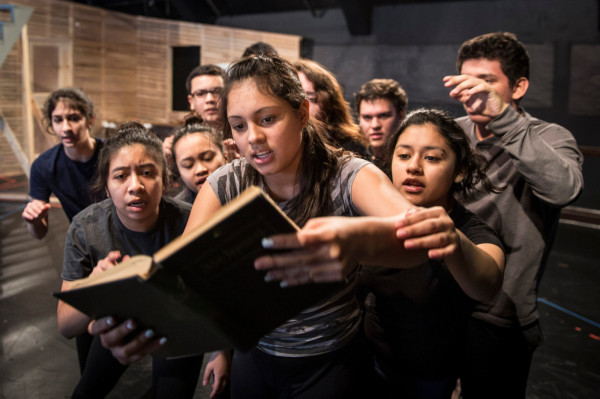God’s Work began in a storytelling circle at our theater on Chicago’s northwest side, a space that is equal parts creative laboratory and second home for APTP’s youth ensemble members and adult artists alike.
Like all of APTP’s original plays, God’s Work is inspired by a true story. APTP has honed the ability to establish a safe environment in which people – adults as often as youth – feel comfortable sharing precious parts of their lives and trusting us to bring those experiences to the stage. Sometimes we gather these stories through ethnographic projects that take us to communities throughout Chicago. That was the case with Home/Land (2012-13) and I Will Kiss These Walls (2013), which uncovered stories about the human cost of immigration policy and the housing crisis.
Our journey toward God’s Work started when a 14 year-old ensemble member shared this striking fragment of her personal history: “I learned to love when I was ten years old. I learned to see, to hear, to touch…I learned to love.” As poetic as this sounded, all of us present heard in Rachel’s voice that she meant it literally. We – the youth and adult artists of Albany Park Theater Project – wanted to learn more. That led to a series of interviews, conducted by a mix of youth ensemble members and adult APTP artists.
Inspired by those interviews, God’s Work was devised collaboratively by APTP’s youth ensemble and professional artistic team, which boasts some of the finest theater artists in Chicago. While this process isn’t the typical journey to the stage for most plays, it is our normal way of working at APTP. Our plays have no single author. Indeed, an APTP project often has no script for many months, as the company collectively generates volumes of possible text, movement, and music.
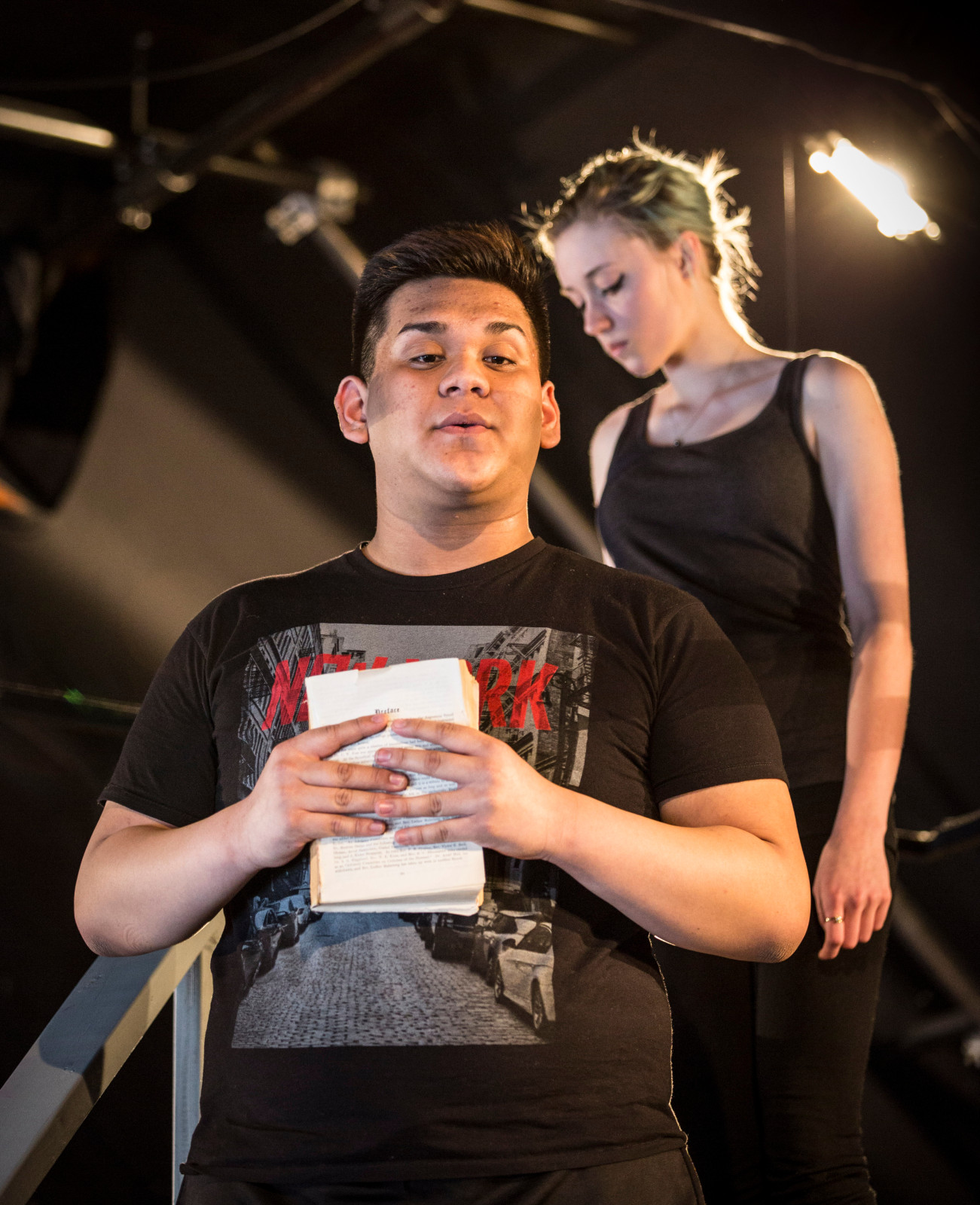
During the devising process, we explored how Rachel’s story might work as theater. At each workshop, APTP’s adult directing team gave youth ensemble members creative assignments that asked them to envision different parts of the story on stage. Some assignments called for actors to spontaneously improvise a scene from the story. Other assignments gave small groups of actors a set amount of time to conceive an idea and rehearse it into a rough-draft performance, with each group sharing its work at day’s end. In keeping with APTP’s multidisciplinary aesthetic, some assignments asked actors to focus on text, some on movement, some on sound, some on a combination. Typically, multiple groups worked simultaneously on the same assignment. At the end of the day – after seeing several possible approaches to a scene, theme, or challenge – directors and actors would talk together: about what elements of each group’s work best told Rachel’s story, about what elements were most exciting theatrically, and about where to go next.
Slowly but surely, we moved toward a map for the play. After months and months of devising, I assembled a script based on this map, our interview transcripts, and audio and video recordings of the voluminous material generated in workshops. The text that comes into rehearsal truly represents the ensemble work of a good 30 artists. And then, in rehearsal, the text is up for grabs again, with actors and directors rewriting, cutting, adding, as the other production elements evolve. Like every APTP production, God’s Work – its text, choreography, staging, and design – is a remarkable act of collective authorship.
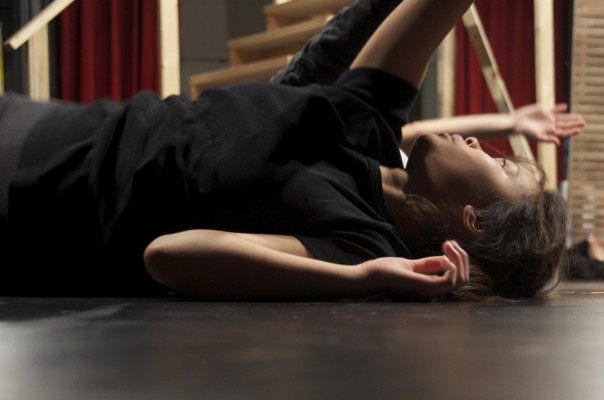
The play we created from Rachel’s story is an exploration of resilience. The real-life Rachel today is one of the most poised, self-aware, accomplished and generously loving people I’ve ever encountered. People who don’t know her story say this about her all the time, often within minutes of meeting her. We wanted to make a play that celebrates her triumph and that illuminates the question of how a person – especially a child – summons the capacity not only to survive the most dehumanizing trauma, but to become so exquisitely human. This led us to fundamental questions about what it means to be human and about how we learn to love.
Albany Park Theater Project originally premiered a version of God’s Work at our home theater in 2006, directed by me and Laura Wiley, APTP’s co-founder who died from ovarian cancer a year later. That 2006 production ushered in a new era for APTP aesthetically, characterized by the seamless integration of high stakes storytelling, gorgeous movement, original music, and stunning visuals.
Eight years later, in 2014, APTP’s partnership with the Goodman Theatre gives us the opportunity and resources to re-imagine this beloved work from our repertoire for a larger canvas – and to share it with a citywide audience. In preparation, we have taken God’s Work back into our theater laboratory. The Goodman’s Owen Theatre is much larger than our home theater. Our team is having a grand time conceiving, designing, and staging God’s Work for the larger scale of the Owen. The God’s Work that premieres at the Goodman in April, 2014 will feature an all-new scenic and costume design, a new music score, and – a brand new feature to this production – scenes of bunraku puppetry. The multiethnic cast ranges in age from 14 to 19 and will surely be one of the most diverse ensembles on any Chicago stage this spring.
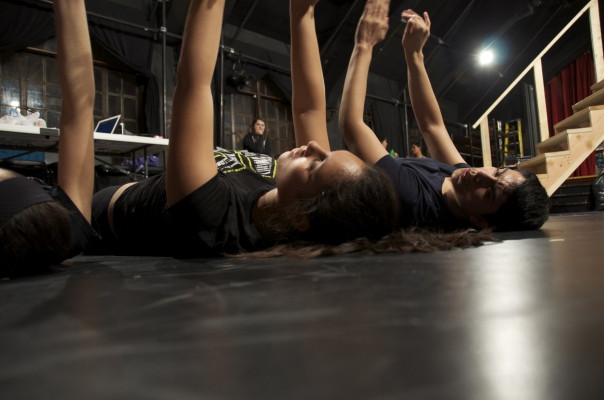
The profound emotion inherent in Rachel’s story has inspired us to craft some of our most visceral theatricality ever. I believe audiences will be astonished by the startling sensitivity, indomitable spirit, and extraordinary imagination with which our youth ensemble brings to the stage the extremes of both brutality and tenderness in God’s Work.
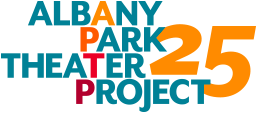 Menu
Menu
